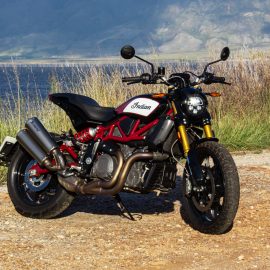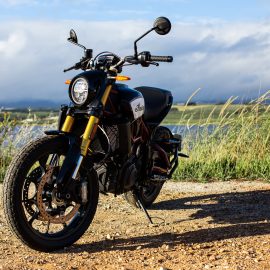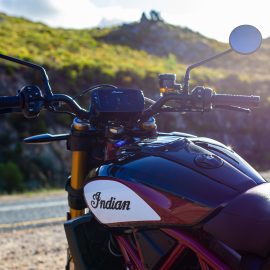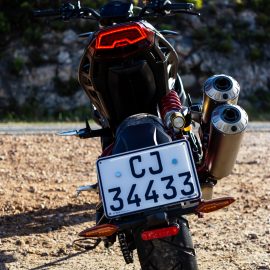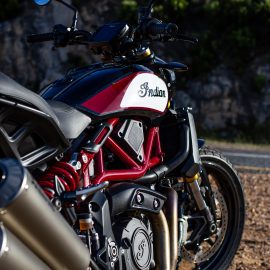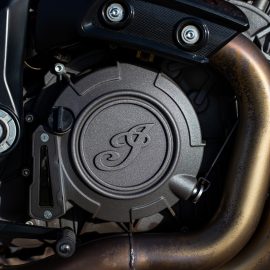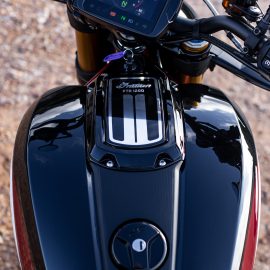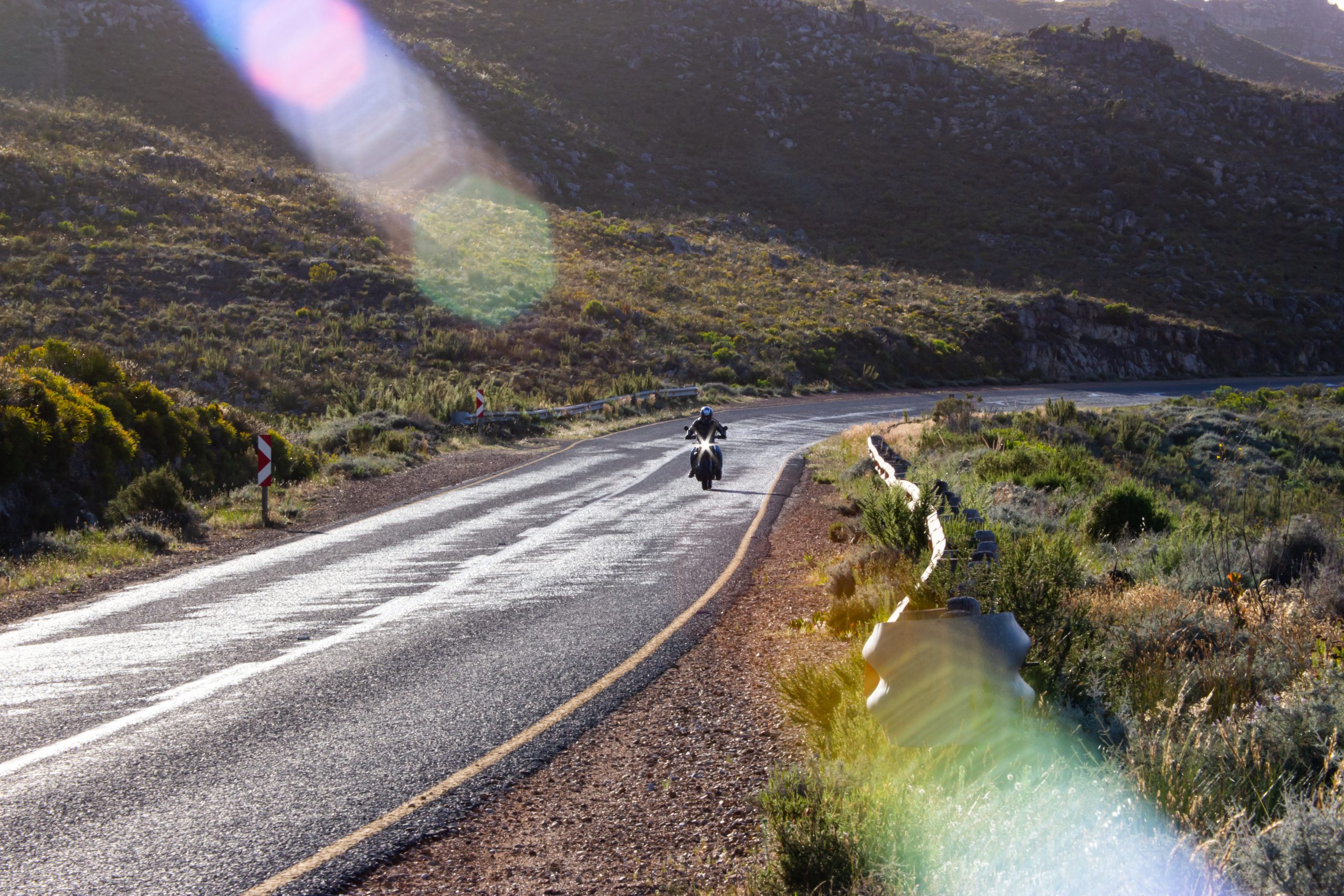
28 Jan On Yer Bike: Indian FTR 1200
This month, FMM Curator Wayne Harley goes all environmental and tames the wind with an Indian…
Considered the oldest American motorcycle company, the Hendee manufacturing company – builders of the Indian motorcycle – was founded by George M Hendee and Oscar Hedstrom in 1901 in Springfield, Massachusetts. The company officially changed its name to Indian Motocycles in 1923 – and, yes, notice there is no ‘r’ in motocycles, which was the official spelling back in the day and it remained so until the 1950s. The omission is claimed to have been based on the Italian spelling of ‘moto’, as the Indian company held the Italian brands in very high regard.
Indian Motorcycles (we’ll use the later spelling) was at the sharp end of the development race, which was noticed out on the race track, especially in competition with Harley-Davidson. It must also be noted that Indian was the first company to field an organised racing team in the USA. It was also the first American motorcycle company to compete internationally at the Isle of Man, running a team in 1909 and 1910, with a second place being achieved in 1909.
However, it was in 1911 that Hendee Manufacturing went full out by entering five riders on Indian motorcycles. The riders were Jake de Rosier – said to be the world’s first professional motorcycle racer – Indian factory riders Arthur Moorhouse and Charles Franklin, plus two factory supported privateers, namely AH Alexander and a little-known British rider Oliver Cyril Godfrey. It was Godfrey that took the honours for the Indian team followed home by his team-mates Franklin and Moorhouse. Sadly, Godfrey was killed during WWI, and legend has it that he was shot down by the renowned Red Baron while flying for the RFC Bomber division. Indian continued build motorcycles through both World Wars and racked up many records and accolades like Ed Kurtz winning the first ever Daytona 200.
From 1953, tough times were the order of the day for Indian and the company eventually was sold off to English businessman John Brockhouse, who imported Royal Enfields into the USA and sold them as Indians. The company was again sold, this time to Associated Motorcycle Company (AMC). Thereafter, a number of attempts were made to breathe life back into Indian with very little success, until 2011 and eventual purchase of Indian motorcycles by Polaris. The most memorable highlight of this period in history was New Zealander Burt Munro setting some remarkable land speed records on his 1920 Indian at Bonneville Salt Flats in 1967, reaching a speed of 205 mph (330 km/h).
Since 2011, Indian Motorcycles has produced some of the most stunning and well manufactured motorcycles on the market and has recaptured that cult following of yesteryear, with models including the Scout and Chief once again available. With their return to flat-track racing and American Jared Mees’ domination of the sport, it was only logical that a street version of the track bike was made for road. Enter the Indian 1200 FTR…
I was fortunate to be able to ride an FTR 1200 recently and was impressed at the ride albeit not for all the reasons one would normally expect. The FTR does what most modern motorcycles do – and does it rather well, too – having safe, predictable handling. And for a naked flat-tracker style bike, I found it is rather comfortable, even on an extended ride into the Boland. But it was the way that the 1203cc V-twin delivered the 85 kW and 115 N.m torque at just 6 000 r/min with three riding modes (Sport, Standard and Rain) that had me interested.
When compared to the likes of the KTM Duke or Ducati Diavel, the performance figures of the FTR seem a little below par, and yet it feels strong, pulling great through the revs. However, you must be quick with gear changes as the red line appears quickly. But the six-speed ’box and slipper clutch are on par with most other motorcycles. The FTR is very much a drag or sprint type bike and doesn’t have an impressive top end speed, but it does feel oh so strong. It was so much fun for the time I could use it, but travelling into a very strong Cape South Easter wind, applying just a little too much power does find you having to hang on, and that does become hard work after an hour…
The brakes are Brembo ABS, which says it all as they are more than capable, with twin 320 mm discs up front and a 265 mm single disc at the rear as well the now customary anti-lock braking control. The suspension is also very good, as can be expected with a fully-adjustable inverted 43 mm front suspension, and adjustable piggyback IFP rear set in a steel trellis frame. The seat height is 840 mm, and the riding position is pleasant and comfortable. With an overall length of 2,3 metres and a height of only 1,3 metres, the motorcycle is narrow and compact and perfect for my riding style.
The Indian FTR 1200 is by far the most attractive Indian motorcycle out there at the moment, with great, classic, retro flat-tracker looks atop modern handling and performance. This bike definitely put a big smile on my face… or was it the South Easter pulling my cheeks back as I powered my way forward?
Thank you Mark Walden for making this memorable opportunity possible.




